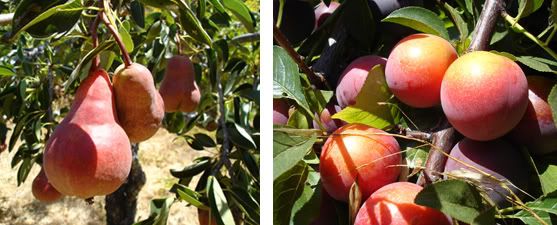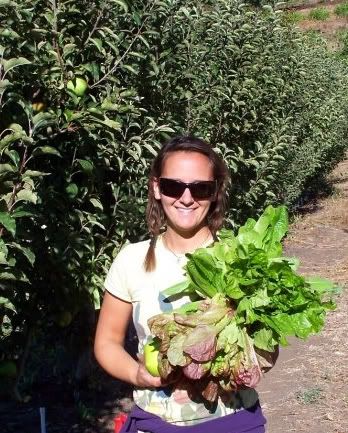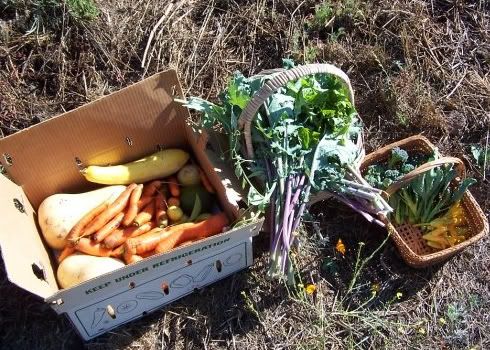Do you ever notice how we forget to pause and reflect or breathe for that matter in these hectic times we live in? I have a friend who is a story teller professionally who tells me that the pause taken in the course of telling a good story, is just as important as the words themselves. All this to say that I’m taking a pause in the middle of the holiday season, when we’re blessed with being busy making 2009 plans for our clients that encompass the worlds of tea, chocolate, fine wine and environmental causes, to share Charles Communications' insights into beverage trends be they green, vinuous, spirituous or non-alcoholic. These were presented at the 2009 San Francisco Trends Think Tank organized and presented by my long term friend and colleague Andrew Freeman, who has a knack for what’s next. I’d like to think that our curiosity and desire to quench our thirst for knowledge, informs what we envision to be the trends for next year. I plan on making this forecast annually, and I hope the research helps you in whatever way possible. So get a glass of your favorite beverage, and sit back for a look see into the crystal glass of 2009

Top Beverage Trends for 2009General Overarching Trends:
Going Green Organic, Biodynamic, Fair Trade and Sustainable offerings are continuing their upswing in many arenas be it fine wines, mass market wines, craft brew beer, spirits, coffee, teas, juices. It’s becoming more of a standard than a specialty item, but still has a ways to go. Also because there are so many shades of green, consumers have yet to have complete confidence in or understanding of the degrees of greenness in products.
Mr. McGuire to Benjamin in the Graduate, I’ve Got One Word for you: Plastics As the beverage industry responds to two incentives 1) consumer call for more green packaging and 2) the economic realities of rising fuel costs and shipping rates, packages are getting lighter and carbon footprints are getting smaller. More beverages from Coca Cola to Appellation Controlled Rhone wine are being packaged in PET plastic bottles, meant for early, quick consumption, not aging.
Small is Beautiful Sample sizes are not just for beauty products any more. Many wines are being offered more often in ½ bottles now for those who are watching their intake or who are being savvy shoppers. There are even juice size boxes for wine in 250 ml sizes. Ready to drink is not just for non-alcoholic beverages.
It’s a Small World After All As the internet has brought us closer, and as people who enjoy beverages travel and seek value, we are seeing more exotic wines show up on wine lists from places such as Croatia, Uruguay, Turkey, India, China. Beverage managers for top restaurants are now visiting distilleries around the world, in addition to wineries as well as other locales where unique beverages are crafted.
Alternative Packaging: Recycling Many products are either making their packages more environmentally sensitive (note the new water bottle shape using less plastic), or are made of post consumer recycled product or are 100% recyclable. Tasty affordable wines are showing up in trendy modern designed boxes and tetra paks, aluminum bottles and lighter weight glass. Some bottles are being designed by spirits companies for re-purposing, re-use.
Drinking outside of the Box: High end designed boxed wines are no longer the stigma socially that they used to be. Quality across the boards from import to domestic is on the rise, and with premium wine prices rising, boxed wines are the chic alternative for big gatherings and at home consumption.
Education: No Glass Left Behind From servers to clientele in hotels, restaurants, wine shops the thirst for education has never been stronger. Certification programs are abounding for wine knowledge at the consumer and trade level. Staff are being trained to know everything from sakes to teas to artisan tequilas so they can up sell their clientele. Staff trainings and tastings are more prevalent than ever. Many restaurants are offering their clients an opportunity to be educated on specific subjects of interest i.e. Single Malt Sundays at the Viceroy in L.A., Sommelier Unplugged Nights with Chris Sawyer at the Carneros Bistro in Sonoma, Eno-Versity at Eno in Chicago where clients learn about wine, chocolate, cheese once a month.
What a Pair Going beyond the traditional, restaurants are pairing all sorts of beverages with their menus these days from beer to sake to coffee, and are also giving clients suggestions right on the menu of wines by the glass or bottle to enjoy with their dish, helping clients get over the hurdle of what to pair with their meal.
Flight Instructors It’s taking off, sample sizes or tastes of different wines, beers, spirits, sakes are being offered in wine bars, restaurants, hotel bars/lounges. Two ounce pours of different offerings are offered in flights for people to learn about nuances i.e. difference between blanco and reposado tequilas, to experimenting with new wine producing regions around the world in a glass. Bars are encouraging trial and sampling, Try Before You Buy. Small tastes of top luxury wines/spirits are also popular where one can have a taste of something that may be out of normal affordability range: a bit of luxurious indulgence.
It’s the Economy Stupid As goes the general world economy of haves and have nots, while value sensitivity is increasing in restaurants and wine shops where consumers are quietly downshifting their price points for wines by the glass or wine purchases by the bottle, at the same time, people are splurging for $2,000 shots of rare single malt whiskeys or spending $75 for a vintage dated top growth Bordeaux by the glass.
Here Come the Millennials One of the most influential groups to affect the world of beverage especially wine, but it extrapolates to the cocktail and beer culture too. Many are price resistant, well-traveled, internet savvy and total networkers: encouraging and sharing wine, beer, cocktail faves like never before. They are being credited with helping the wine industry have one of its strongest year’s ever. Unorthodox in their approach, they are leading the way with trial and experimentation across the boards.
For everything there is a Season Seasonality in ingredients is not just for the menu any more, there are seasonal farmer’s market based cocktails exploding on the scene in the world of mixology. Craft brews made for a limited seasonal time are at an all time high in terms of popularity fueling the locavore movement and the sense of being sensitive to the season we’re in resonate with consumers.
Trends in Specific Beverage Arenas:
Raise the Wine Bar It has been said that Wine Bars are the Coffee Bars of the 2000s. Wine Bar concepts are exploding around the country with mutiple bottle lists, themes (i.e. only South African or California based wine lists), large numbers of wines by the glass i.e. 50-100 offerings are quite common in many new wine bars. Themes that get people’s attention from ‘Oak vs. Stainless’ chardonnays, to ‘Funky Reds’ are popping up on lists to get consumers to have fun while they’re getting educated.
Will we see Wine at McDonald’s? As we see institutions such as McDonald’s serving the needs of coffee drinkers seeking lower priced alternatives to Starbucks, perhaps wine isn’t far off. Some early adopter upscale fast food locales such as Q-Shack in North Carolina or Taylor’s Refresher in California are offering wines by the glass or ½ bottle with your pulled pork and hamburger. Noodles & Co. and Pei Wei are chains that are offering wines now. Why not? It might slow the artery hardening... :)
Are you Local? All 50 states produce wine today in the U.S. and as the quality levels continue to improve, we’re seeing more local wines on lists in urban markets as well as more demand to have wines consumed locally that have a lower carbon footprint. Sommeliers are encouraging trial with tastes and local farmer ingredient driven menus for pairing.
SpiritsFrom Sea to Shining Sea From the Blue Ridge Mountains to the Bay Area, mom and pop distilleries are all the rage with over 100 independent spirits producers in Northern America (up from 5 in 1990), small spirits producers are being championed by the urbane mixologists across the country, creating a market and demand completely unexpected. Called the “gourmet-fication†of spirits by experts, expect to see more on the scene.
Corpse Revival Playing off the term used for a classic cocktail including Absinthe, obscure, once forgotten spirits are coming back due to high demand from the creative cocktailians mixing it up across the country. Spirits and liqueurs such as Crème de Violette, Absinthe, Swedish Punch are being brought back by purists who want to see classics revived.
Ying and Yang in Cocktail Culture Borrowing from the savory and sweet side of many menus, and crossing over between bartender and chef, never before have the kitchen and the bar collaborated so closely in the making of cocktails. Gone are many of the super sweet cocktails (dessert cocktails excepted), and mixologists are opting for the palate cleansing balance of a good cocktail.
Drink Your Dessert Many mixologists are finding innovative ways to forego dessert in favor of a dessert like cocktail or even a cocktail that is half eaten and half drunk such as the French Toast cocktail at Benoit Bar in NYC or the White Russian Rice Krispie flavored treat at Tailor in Soho, NYC.
That’s the Spirit Certain spirits seem to have a buzz going, meaning that they’ve become the darlings of the mixology set…2008 saw a rise in popularity of 100% agave Tequila, Absinthe with its legal status granted for the first time in 75 years, genever style Gin gaining favor over traditional gin, Small Batch Whiskey from different states in the U.S., artisanal Bourbon still rising in popularity as an American original.
Beer: Roll out the Barrel Cask ales from craft brewers are now offering limited releases and are being aged in cellars in restaurants like wine. Restaurants are beginning to pair specialty cask beers with menus and it is one of the least known but rapidly growing areas of interest in beverage right now.
Big Bottles The 22 ounce beer bottle is no longer the domain of the frat boys, it is now an offering in restaurants for food pairing similar to wines for specialty beers. Especially popular are the Belgian beers and lambics both at retail and on premise.
Other cool trends in beverage:
Tea: Lose the Doilies Tea is no longer associated with only the formal hotel service of British heritage or the yoga set, it has gone mainstream and modern. Tea sommeliers are working the floors of tea salons in urban areas, teas are showing up in cocktail infusions and in hot toddies, Ready to Drink teas are more popular than ever with all sorts of healthful flavorings from green tea to ginger, to pomegranate to white and red teas. Chefs are cooking with tea for savory and sweet items on the menu.
Water Pressure With water becoming a more precious resource and with sensitivity to packaging and waste becoming more top of mind, restaurants are now switching to inhouse filtration and carbonation systems to produce water options from the tap and offering it complimentary to guests.
Focus Your Energy The proliferation of energy drinks and vitamin/energy infused waters doesn’t seem to be losing any ground. For people on the go, getting nutrients and energy boosts is a global phenomenon.
For more "trends to watch for 2009", check out the following live interviews. Popular Spirits for 2009
Watch more video clips on: Organic Spirits, The Impact of the Internet on Wine, Economic Effects on the Wine Industry, The Rise of Sake, Wine Bar Popularity, Overarching Trends for '09.
Visit our video library on YouTube.













